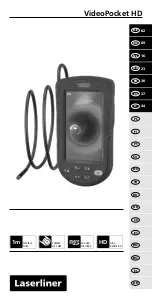
23
Testing the Probe
Your Model 8718 is equipped with two RF sources for testing
probes. Press
Test Source
and both sources will stay on for
approximately 20 seconds.
A contact on the right side of the unit is used for testing low
frequency probes. These probes have three test points around
the head of the probe. Position the probe so that one of the test
points touches the contact on the meter. You should get a
deflection on the bar graph but the amount of deflection is not
important. Repeat for the other two test points to insure that the
probe is working correctly.
A microwave window on the right side of the probe is used for
testing high frequency probes. Hold the probe parallel to the
right side of the meter and position the probe head against the
test window so that one of three arrows on the probe is pointing
towards the window. These arrows indicate the location of the
three sensors inside the probe. A deflection of any magnitude
on the bar graph is acceptable. Repeat for the other two sensors
to insure that the probe is working correctly.
Ultra-broadband probes contain both high frequency and low
frequency sensors. These probes require six checks – three
high frequency and three low frequency.
Using Probe Correction Factors
All probes have a certain amount of
frequency sensitivity.
Frequency sensitivity is the amount of deviation from the correct
measured value that a probe yields at various frequencies.
Obviously, the smaller the deviation, the better. But since a
certain amount of frequency deviation is unavoidable, the more
frequencies that you calibrate the probe at, the better. At each
calibration frequency, you have a correction factor.
Multiplying the reading on the meter by a correction factor
marked on the handle of a Narda 8700 Series probe
compensates for the probe’s frequency sensitivity. The Model
8718 is unique because it can perform this task automatically.












































